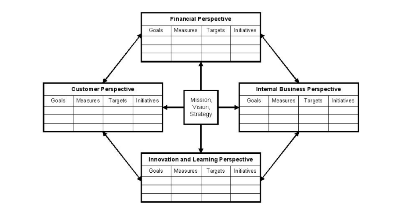India’s infrastructure investment targets for creation of world class assets are ambitious. To reach the goal of becoming a $ 5 trillion economy, $1.4 trillion will need to be invested in creation of physical assets. Who would be called upon to construct these large- scale infrastructure assets? EPC companies of course!
TQM, IPD, BIM, Lean and ISO and other excellence models are operational excellence models to improve performance at the project or portfolio level. The Balanced Score Card, scores over these for being ‘balanced’ as an organisation wide comprehensive and holistic approach.
The ability to take up capital intensive, long term asset creation requires a vibrant and capable industry, which has world class players to bid for them.
Indian Infrastructure Investment Scenario
India’s infrastructure investment targets for creation of world class assets are ambitious. That’s because the country’s economic development targets are ambitious. To reach the goal of becoming a $ 5 trillion economy, $1.4 trillion will need to be invested in creation of physical assets! In year 2022 alone India would need USD 646 billion of which 70 percent is needed in power, roads and urban infrastructure alone. The Indian construction sector is forecasted to grow at the rate of 6 percent between year 2019 to 2024. India needs to spend 7-8 percent of its GDP on infrastructure every year to be able to grow at the rate of over 8-9 percent.
Who would be called upon to construct these large- scale infrastructure assets? Engineering and construction companies of course!
The Indian Construction Industry
The Indian construction market has its own peculiarities. Despite opening up to several large international players, it remains highly competitive and the major local players tend to be too aggressive. Medium and small players are entering due to sustained government investments in the sector, making the market attractive. With so much potential as mentioned in the previous section and low barriers to market entry, competition will likely further intensify, resulting in a highly splintered industry with the least consolidation. When compared with other sectors such as manufacturing, IT and Services, the Indian construction industry faces flak when it comes to adoption and propagation of world class standards, operating with a strategic perspective and giving up its tendency to be short sighted and transactional, when it comes to operating in the international market. This is brought to bear below.
The ENR Top 250 ranking (2019) global contractors’ world -wide had only 4 Indian companies Larsen and Toubro, Shapoorji Pallonji, Tata Projects and Afcons Infrastructure, compared to its nearest competitor China which had 47 companies, even bagging the first 2 positions in the list. USA stands at 91 of the Top 250.
This could be attributed to the following drawbacks as witnessed in India
Short term outlook (project to project) towards business
Non transparency in cost allocation, control and decision making
Fragmentation and adversarial culture within the industry
On this backdrop one can see the huge distance Indian contractors and construction companies will need to cover before Indian contractors in the ENR 250 reach a double -digit figure as top- ranking contractors of the world. It is also in this context that perhaps a better way for Indian contractors to achieve significance is through benchmarking against successful companies from its own domain and others that make use of the Balanced Score
Card.
What is the Balanced Score Card Framework?
The BSC is a performance measurement system developed by Kaplan and Norton (1992), which is a set of measures that gives top managers a quick yet comprehensive view of the business. BSC is a measurement of tangible and intangible assets. It is ideal to help translate strategy into critical success factors and establish a clear cause and effect
relationship in the four criteria that comprise the BSC. The gains from this method to achieve high degrees of competitiveness may be attributed to the following reasons
- The BSC ensures organization-wide transparency
- Financials of the company will improve by improving the other perspectives (described further)
- There is a seamless alignment with the organization’s mission and vision
- Goals are converted into tangible actions
- The strategic plan consolidation happens with the use of the BSC
The BSC reflects the financial measures that showcases the outcomes of actions already taken complementing operational measures related to internal processes, customer satisfaction, and the organisation’s innovation and improvement activities. It is these very measures that will determine the future financial performance. It is completely an enterprise perspective, having leading and lagging indicators. It is not merely descriptive but an exercise that has quantitative analysis as its basis, making it robust and measurable to scrutiny. Among the four perspectives measured, Innovation and Learning carries the highest weight of 0.34 and the rest of the three an equal weightage of 0.22 each.
Central to the four perspectives is the company’s Vision, Mission and Strategy. Let’s look at how this appears for any company regardless of sector.
Four Perspectives of the BSC
1) Financial Perspective:
– Brings out the direct relationship between actions and results.
– The financial goals include profitability, sales growth, market value of the firm and liquidity
– Ideally, they also represent the long- term goal of the organisation
2) Customer Perspective:
– It is to measure how well the company is meeting the demands of the customers
– A customer perspective helps the company to address important concerns of
customers and build continual loyalty in its market segments. It analyses the internal
processes that ensure customer satisfaction, retention and acquisition
– It is related to time, cost, quality, performance & service and cost
3) Internal Business Perspective:
– Identification and improvement of critical internal business perspectives to improve
competitive edge and shareholder satisfaction
– Consider those processes and measure them, th
at have the highest impact on
customer satisfaction, profitability, core competencies, financial objectives.
4) Growth and Learning Perspectives:
– This is the one that cements all other perspectives.
– They are classified into three categories, namely, employee, information systems and
soft aspects that include innovation, motivation, empowerment and alignment
capabilities
– Of these, innovation is a key driver when competing globally. A company’s ability to
innovate, improve and learn determines the company’s value.
– For this to happen the long -term infrastructure to support innovation is necessary
and most significantly
– The gaps in financial, customer and internal perspectives will be revealed in the
capabilities of people, systems and procedures.
– Refer the representation in Fig. 1

Fig. 1 Balanced Score Card representation
The key to high performance of companies lies in the term ‘balanced’. It is only after knowing the three critical actions mentioned below that the four perspectives can be balanced
- The financial and non-financial measures
- Internal and external stakeholders
- Balance between lag and lead indicators
Rationale and Comparison of BSC and TQM, IPD, Lean and ISO and other excellence models
This article makes a case for project driven construction organisations to better their game not only at the project level but also at the organisational level. A balanced project score card (PSC) of all the company’s projects can be used to measure performance using KPIs and aggregated to prepare a BSC for the company.
The methods like Total Quality Management (TQM), Integrated Project Delivery (IPD) and the International Standards Organisation series (ISO), among several others are all operational excellence methods to improve performance at the project or portfolio level. The Balanced Score Card, scores over these on the grounds of being overall ‘balanced’ as an organisation wide comprehensive and holistic approach.
How would the PSC/BSC be generated?
An attempt at creating the PSC was proposed by Katic and Bevanda (2010) for construction companies, inspired by the completeness and robustness of the BSC model studied before by Amaratunge et al (2001) in the context of facilities management and Wongrassamee et al (2003) in comparing BSC. Without exception all propose this to enable construction
companies to improve the strategic direction, communicating of expectations, and measuring of progress towards agreed objectives. Our own study of one of India’s largest international construction company revealed much the same findings (Shah, Bhansali and Agarwal, 2012).
To prepare a PSC/ BSC it is important to work with the following
• Goals: Brief statements that describe what must be done in each of the four perspectives to achieve the strategic plan.
• Measures: Indicators to be used for monitoring success in achievement the goals.
• Targets: Quantitative values that determine success of measurement.
A BSC for a Leading Construction Company in India- MCC Ltd*.
A while ago my team and I explored the possibility of studying the use and rationale of using a BSC for an Indian engineering and construction organisation. As there was no company publicly known in the construction contracting industry applying BSC to measure its performance and formulate strategy, needed to apply simulation technique to determine the efficacy of employing the BSC as a technique feasible in the Indian context.
The company is one of the largest players in the engineering and construction market India. It has been in operation for more than five decades. It is internationally aggressive and has bagged several projects in MENA and Asian countries over the past two decades. However very few of its overseas projects have been as the Principal/Main Contractor. This implies that the ability of the company to be a significant player in the international market was not on par with ENR Top 20 contractors, who are global construction behemoths.
The entire simulation to preparing the conceptual framework of the BSC for MCC Ltd was followed as per the Kaplan and Norton methodology. Weights were assigned to all the four perspectives as per BSC and the internal KPIs as listed in the BSC were assessed as per BSC methodology. An internal survey was carried out on the three perspectives other than finance to arrive at the individual KPI score and overall perspective score. The had adequate statistical validity and helped to understand the contemporary levels at which internal business perspective, customer perspective and learning and innovation was deployed. In case of the financial perspective the annual reports of the company were studied for key ratios related to the other three perspectives, once again as per the BSC methodology. Three perspectives viz. Customer, internal processes and finance were weighted at the rate of 0.22 except Innovation and Learning which was 0.34 %, per the BSC scoring template.
Some very interesting aspects were revealed of MCC Ltd.’s capability to become a front runner at the global level.
The findings based on the BSC criteria of MCC Ltd and Implications
- The company was internally geared to improve operations, technology and processes to drive excellence for the benefit of its customers. In case of value engineering improvements (proxy for incremental innovation), the company scored the least among all KPIs surveyed.
- Emphasis on Training and learning was noticed with employees being subjected to rigorous training and skill development. The respondents rated the human resource processes pretty poorly, implying that the company’s ability to attract and retain human talent needed more attention.
- In case of financial perspective, the Net Profit Ratio (NPR), Return on Capital Employed (ROCE), Current Ratio, DSCR, DER were considered for evaluation. The company performed poorly on the NPR and the ROCE. This indicates that the company faced schedule and cost overruns.
The overall implications of the survey revealed that the MCC Ltd
1. The overall score of company was average, with a large margin for improvement
2. The innovation & learning score lowest score. The company needed a higher degree of improvement in this aspect
3. HR practices needed to be reviewed as it had the lowest of all scores.
4. The BSC analysis was successful in revealing the cause-and-effect relationship between the four perspectives.
The BSC framework for one of India’s most significant engineering construction company revealed the existing gaps in the company’s capability to serve the global market in its present avatar. It also points to the potential of the rest of the industry to close ranks with leading global contractors.
*(it was an academic exercise for research purpose only)
Conclusion
The importance of Indian engineering and construction industry to raise its standards to become world class suppliers of infrastructure cannot be underscored enough. The ability to take up capital intensive, long term asset creation requires not just the appropriate macro environment, but more so a vibrant and capable industry, which has world class players to bid for them. Unlike China, India still has a long way to go in this regard.
India and China, neighbouring nations with a host of similarities, are way too different in their capabilities to attract and win foreign contracts. China has built world class infrastructure within its country and effectively exported its construction advantage abroad, to become a $15.66 trillion economy. Since year 2000- 2019 China brought down poverty from 45.8% down to 0.6% respectively, to be declared an upper middle- income country (World Bank, China Page). There may be many detractors who maintain that the means to achieve this feat is not the most acceptable internationally. Despite this, there’s no denying that many more Chinese companies find a pride of place in the prestigious worldwide ENR 250 ranking. That should help to understand the humungous technical and managerial capability China has been able to build, despite India’s head start of almost 40 years before (Chen and Shah, 2014).
To achieve the middle- income status besides the Government of India, it has got to be the Indian construction industry to put Indian construction exports on the world map. To that end, the Balanced Score Card may perhaps enable the industry to get there.
Dr. Mona N. Shah
Mona N. Shah, is an expert and thought leader in the field of education and research. Her work in the built environment has been considered noteworthy in providing thought leadership to the sector. The built environment is a vast sector that covers practically the whole gamut of human activities. As founder and director of Vayati Systems and Research she leads initiatives in leadership, education, skills training and research in projects, infrastructure, real estate sector and related industries.
Key References
1) Dragan Katic, Ladislav Bevanda (2010). Balanced Scorecard in Construction, International Scientific Conference People Buildings and Environment, 10-12 Nov, 2010, Kritny, Czech Republic https://www.researchgate.net/publication/331650837_BALANCED_SCORECARD_IN_CONSTRUCTION
2) Liu Davis, Wan Sammy. Presentation- Balanced Scorecard for Quality Excellence in The Construction Industry: A Success Story, “Strategic Performance Management Through Balanced Scorecard: Local Experience” Seminar, Hong Kong Society for Quality.
3) “India to spend $1.4 trillion on infrastructure in next five years”. Nirmala Sitharaman. PTI October 20, 2019, 09:23 IST https://auto.economictimes.indiatimes.com/news/industry/india-to-spend-1-4-trillion-on-infrastructure-in-next-five-years-nirmala-sitharaman/71670415
4) Report Mordor Intelligence 2016-26. INDIA CONSTRUCTION MARKET – GROWTH, TRENDS, COVID-19 IMPACT, AND FORECASTS (2021 – 2026) https://www.mordorintelligence.com/industry-reports/india-construction-market-growth-trends-and-forecast-2019-2024.
5) ENR’s 2019 Top 250 Global Contractors https://www.enr.com/toplists/2019-Top-250- Global-Contractors-1
6) Kaplan, R. S.; Norton, D. P.; The Balanced scorecard – measures that drive performance, Harvard Business Review, 1992, 134-47
7) Bhansali, D. and Agarwal A. (2012). Master’s Thesis, “Performance Measurement: A conceptual framework for a construction company using the balanced score card”. National Institute of Construction Management and Research, India.
8) Vukomanovic Mladen and Radujkovic Mladen (2011). The Balanced Scorecard and EFQM Working Together In A Performance Management Framework In Construction Industry. Journal Of Civil Engineering And Management ISSN 1392-3730 print/ISSN1822-3605 online 2013 Volume 19(5): 683695 doi:10.3846/13923730.2013.799090
9) Dilanthi Amaratunga, David Baldry, (2002),Moving from performance measurement to performance management, Emerald Insight, Facilities,Vol. 20 Iss 5/6 pp. 217 -223
10) Blog Rachel Smith, 20 Companies Using the Balanced Scorecard (& Why) https://www.clearpointstrategy.com/companies-using-the-balanced-scorecard/
11) China poverty ratio (2020). https://www.statista.com/statistics/1086836/china- poverty-ratio/
12) Report The World Bank in China, Country Page, WB. https://www.worldbank.org/en/country/china/overview
13) Chen C., Martek I., Shah M. N., (2014). ‘The Advantages of the Construction Sector of China and India: A Comparison’, May 19-21, 2014. Full Paper Accepted. Construction Research Congress, Georgia Institute of Technology, School of Building and Construction.

